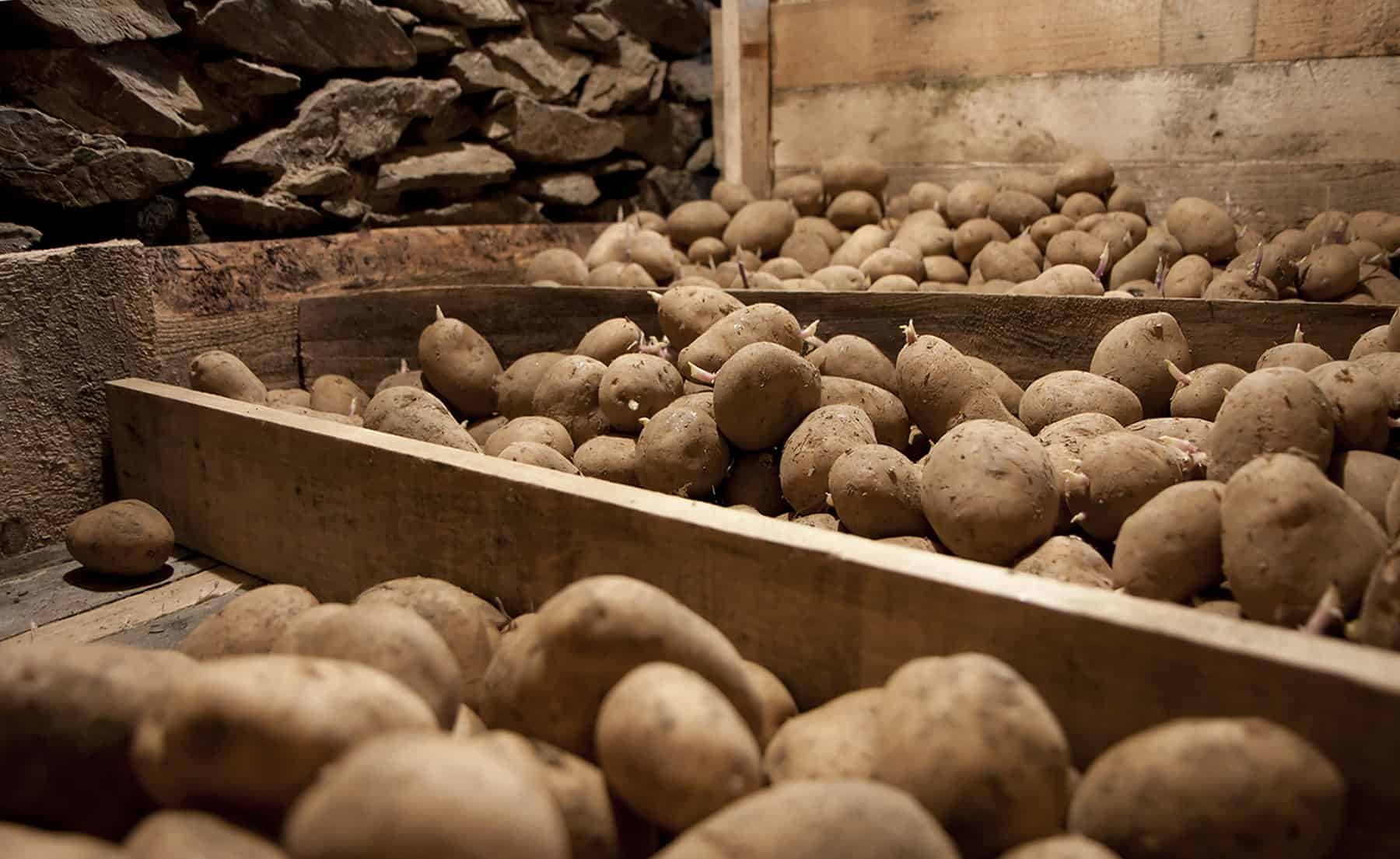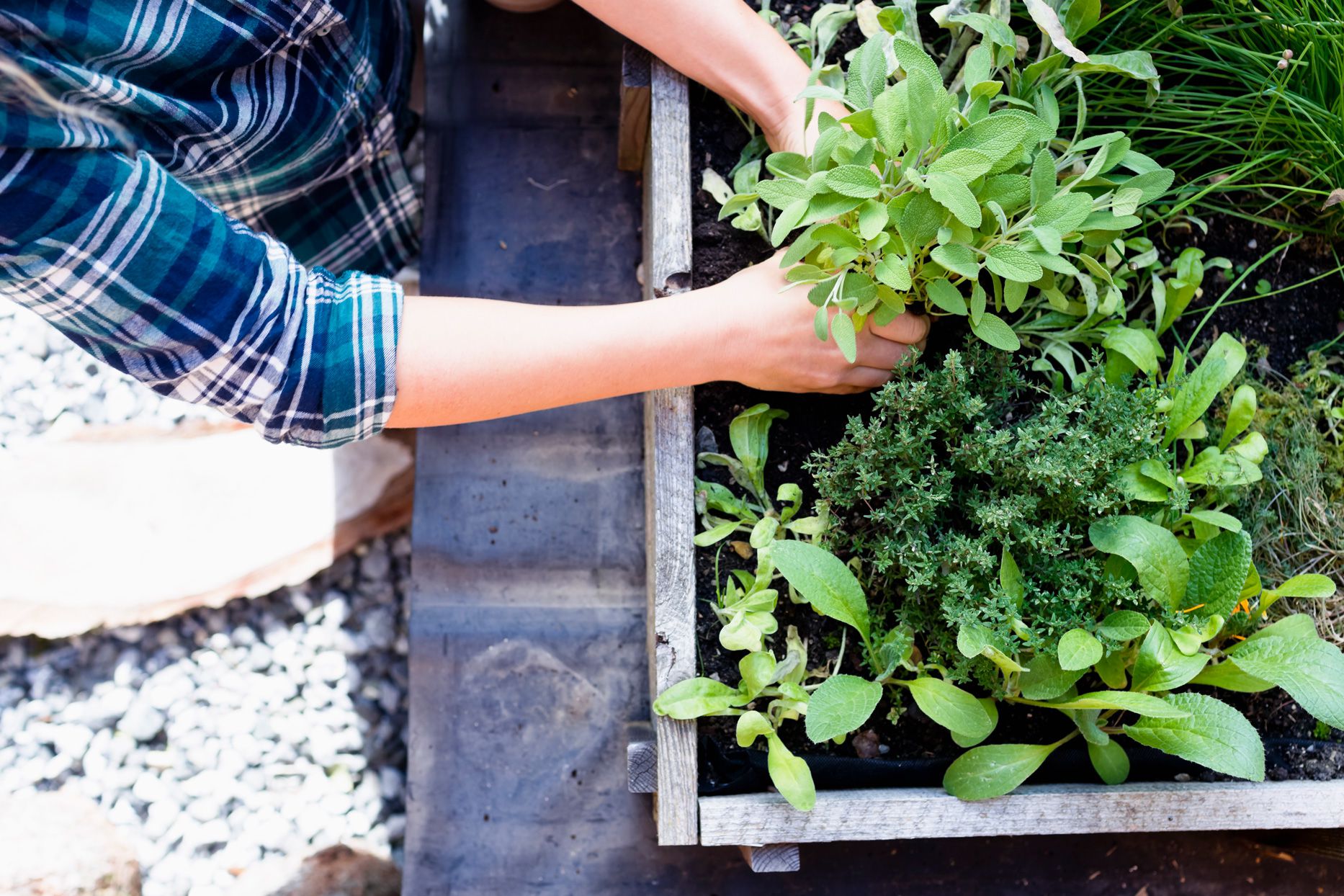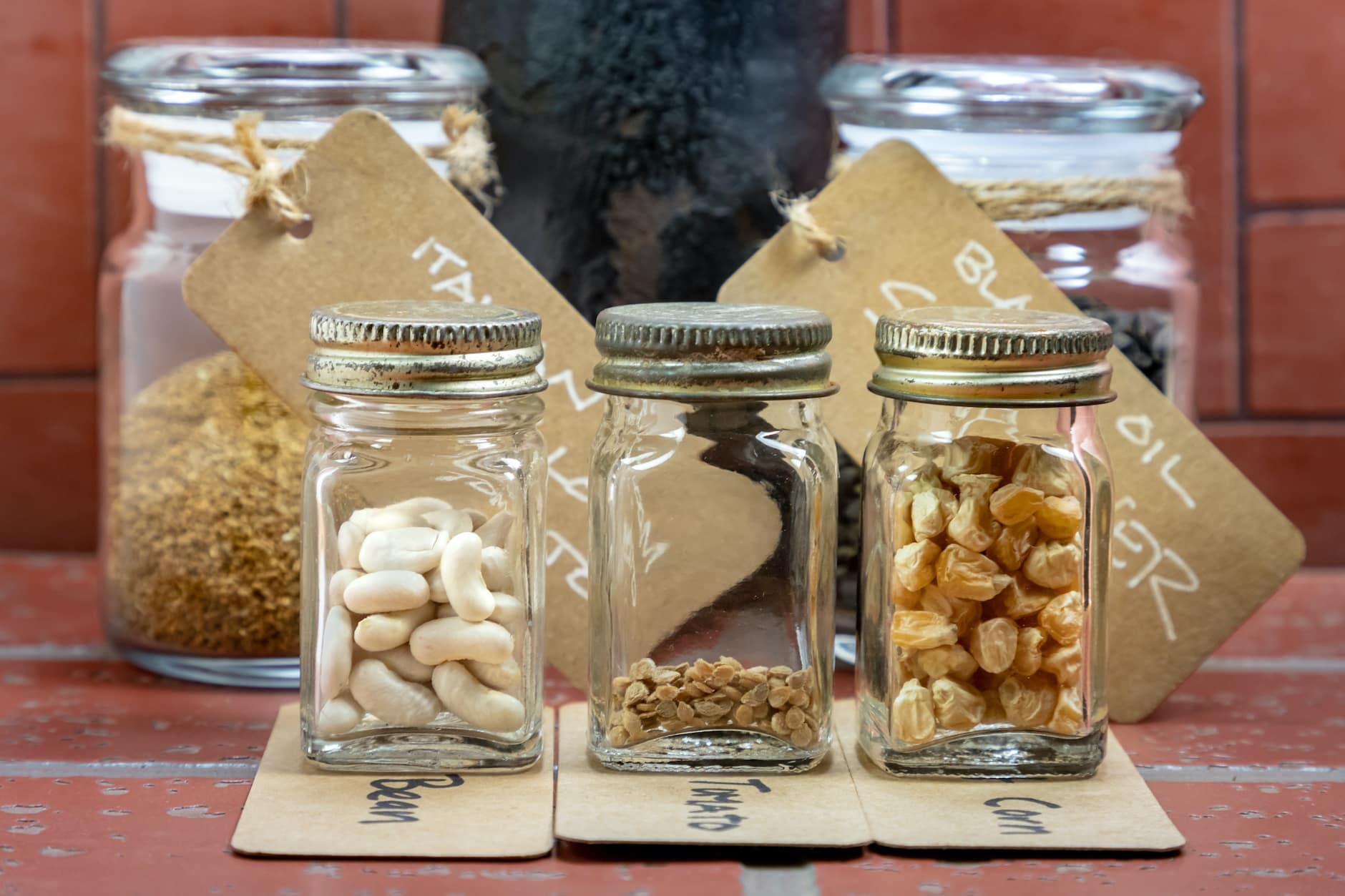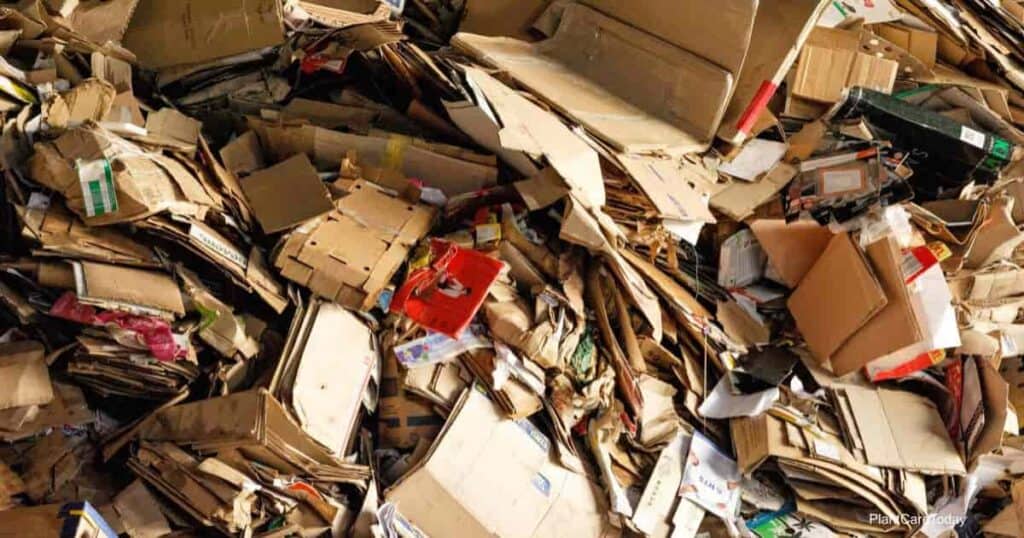Home>Gardening Tips and Tricks>Eco-Friendly Gardening>How To Compost For Garden
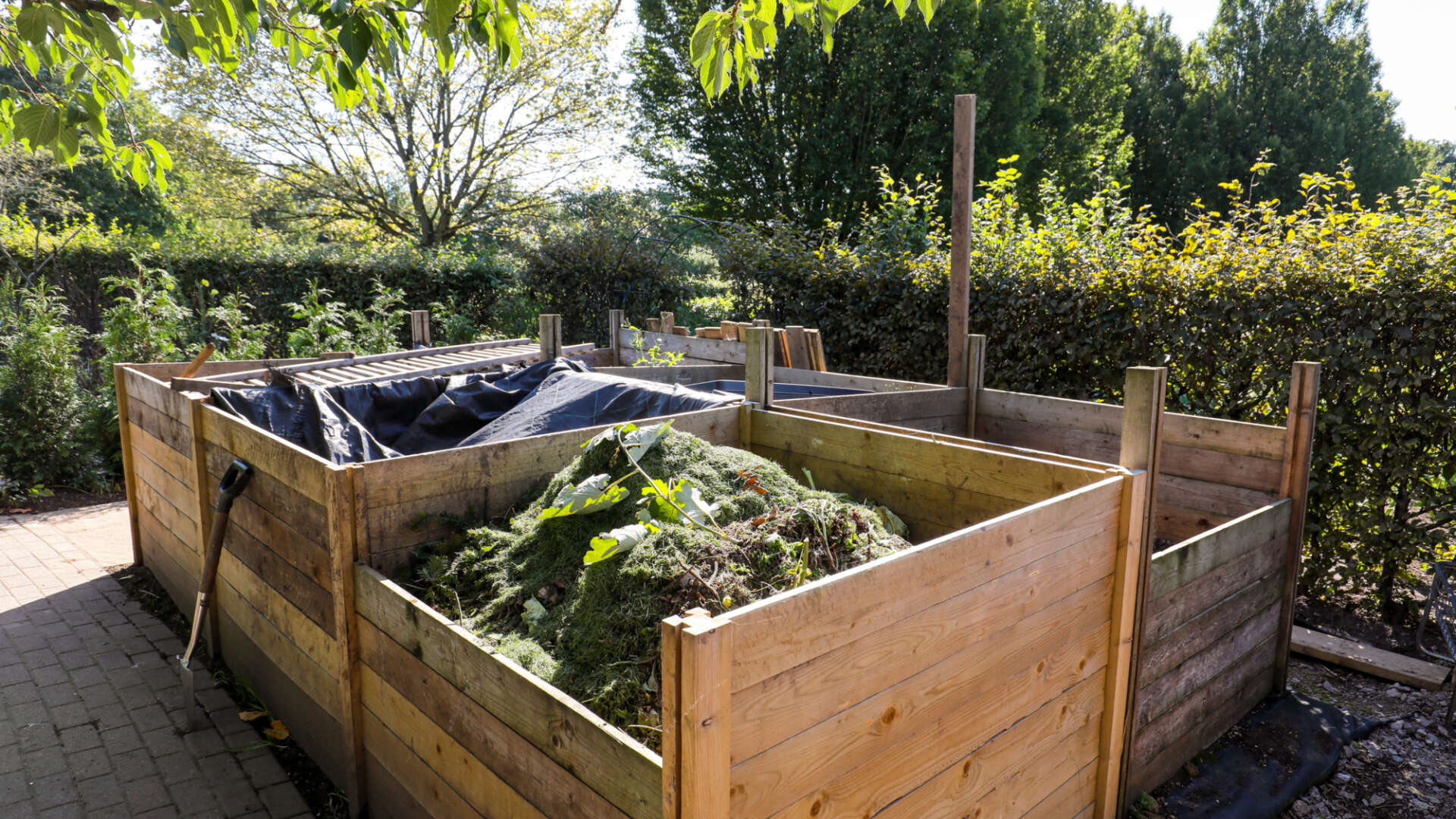

Eco-Friendly Gardening
How To Compost For Garden
Modified: January 22, 2024
Learn how to compost for your garden with eco-friendly gardening techniques. Create nutrient-rich soil and reduce waste with these composting tips.
(Many of the links in this article redirect to a specific reviewed product. Your purchase of these products through affiliate links helps to generate commission for Chicagolandgardening.com, at no extra cost. Learn more)
Table of Contents
Introduction
Welcome to the world of eco-friendly gardening! As more and more people embrace sustainable practices, eco-friendly gardening has become a growing trend. One essential aspect of eco-friendly gardening is composting. Composting is the process of decomposing organic materials to create nutrient-rich soil that can be used to nourish plants and improve overall garden health.
Not only does composting benefit your garden, but it also contributes to reducing waste. By diverting organic materials from the landfill and turning them into valuable soil amendments, you are taking a significant step towards reducing your carbon footprint.
In this comprehensive guide, we will explore the various aspects of composting for your garden. From choosing the right compost bin to troubleshooting common issues, we will equip you with the knowledge and tools to create a successful composting system.
Whether you have a small balcony garden or a sprawling backyard, composting can be easily integrated into your gardening routine. By following the principles of eco-friendly gardening, you can create a sustainable ecosystem where plants thrive, while minimizing environmental impact.
So, let’s roll up our sleeves and dive into the wonderful world of composting and how it can benefit your garden and the environment as a whole!
Benefits of Composting
Composting offers a multitude of benefits for both your garden and the environment. Let’s explore some of the key advantages:
- Nutrient-rich soil: Compost is often referred to as “black gold” for gardens. It is packed with essential nutrients that plants need to thrive, such as nitrogen, phosphorus, and potassium. By adding compost to your soil, you are providing a natural and organic source of nutrients that will promote healthy plant growth.
- Improves soil structure: Compost is a natural soil conditioner that helps improve the structure of both clay and sandy soils. It aids in increasing the water-holding capacity of sandy soil while enhancing the drainage and aeration of compacted clay soil. The result is a well-balanced soil structure that allows plant roots to access nutrients and moisture more effectively.
- Reduces the need for synthetic fertilizers: By incorporating compost into your garden beds, you can minimize or even eliminate the need for synthetic fertilizers. Unlike chemical fertilizers, compost slowly releases nutrients over time, providing a steady and balanced supply for your plants. This not only saves you money but also helps prevent the leaching of harmful chemicals into the environment.
- Retains moisture: Compost acts as a natural sponge, helping to retain moisture in the soil. It absorbs water and slowly releases it, reducing the need for frequent watering. This is especially beneficial in arid regions or during periods of drought, where water conservation is crucial.
- Enriches the soil microbiome: Compost is teeming with beneficial microorganisms, including bacteria, fungi, and earthworms. These microorganisms break down organic matter and help create a healthy soil ecosystem. They aid in nutrient cycling and improve soil structure, creating a favorable environment for plant roots to thrive.
In addition to the benefits it provides to your garden, composting also contributes to a more sustainable and eco-friendly lifestyle. By diverting organic waste from landfills, you are reducing greenhouse gas emissions and promoting a circular economy. Composting is a powerful way to reduce waste and help mitigate climate change.
Now that we have explored the numerous benefits of composting, let’s move on to the next step: choosing the right compost bin for your garden.
Choosing the Right Compost Bin
When it comes to composting, selecting the right compost bin is crucial. There are various options available, each with its own advantages and considerations. Here are a few factors to consider when choosing a compost bin:
- Size and Capacity: Consider the amount of organic waste you generate and the available space in your garden. If you have a small garden or limited space, a compact compost bin or even a compost tumbler may be a suitable choice. On the other hand, if you have a larger garden and generate more waste, you might opt for a larger compost bin or even consider building a compost pile directly on the ground.
- Functionality: Think about how you want to manage your composting process. Some compost bins have multiple compartments, allowing you to have different stages of composting in one unit. This makes it easier to add fresh materials while allowing finished compost to mature. Compost tumblers are a convenient option for those who prefer a faster composting process, as they can be rotated to enhance aeration and decomposition.
- Ventilation and Aeration: Proper airflow is essential for successful composting. Look for a compost bin that provides adequate ventilation or has a design that promotes airflow. This helps prevent odors and ensures optimal decomposition. Compost tumblers and bins with perforated sides or aeration tubes are great options for promoting airflow.
- Material: Compost bins are typically made from plastic, wood, or metal. Plastic bins are lightweight, durable, and resistant to moisture. Wooden bins blend seamlessly into the garden landscape, but they may require more maintenance to prevent rotting. Metal bins are sturdy and can withstand harsh weather conditions, but they may be prone to rusting over time.
- Accessibility: Consider how easily you can access your compost to add materials, turn the pile, or harvest finished compost. Some compost bins have hinged doors or removable panels that make it convenient to manage the compost. Others may require manual turning or lifting, which can be more labor-intensive.
Remember, there is no one-size-fits-all solution when it comes to compost bins. Choose the option that best suits your needs and preferences. Consider your specific circumstances, such as available space, gardening goals, and level of involvement in the composting process.
Once you have selected the right compost bin, it’s time to gather the organic materials needed for composting. In the next section, we will discuss the types of materials that can be composted and their specific benefits.
Materials for Composting
Composting is a natural process that involves the decomposition of organic materials. These materials can be broadly categorized into two types: green (nitrogen-rich) and brown (carbon-rich). When combined in the right proportions, they create the perfect environment for microbial activity and decomposition. Here are some commonly used materials for composting:
- Green Materials: Green materials are rich in nitrogen and provide the necessary proteins and nutrients for microbial activity. They include items such as kitchen scraps (fruit and vegetable peels, coffee grounds, tea leaves), fresh grass clippings, plant trimmings, and livestock manure. These materials decompose quickly and add essential nutrients to the compost pile.
- Brown Materials: Brown materials are high in carbon and provide a source of energy for microbial activity. They include dry leaves, straw, wood chips, shredded paper, cardboard, and dried garden debris. Brown materials help create airspace in the compost pile, improving aeration and maintaining proper moisture levels.
It’s important to maintain a balance between green and brown materials in your compost pile. The ideal ratio is roughly 3 parts brown to 1 part green. This balance ensures that there is enough nitrogen to support microbial growth while preventing the compost from becoming too wet or odorous.
In addition to green and brown materials, there are some items that should not be included in your compost pile. These items include meat, dairy products, oily foods, pet waste, and diseased plants. These materials can attract pests, emit unpleasant odors, or introduce harmful pathogens into your compost.
Remember, chop or shred larger materials into smaller pieces to speed up the decomposition process. Moisture is crucial for composting, so aim for a moisture content similar to a damp sponge. Regularly turning or mixing the compost pile helps distribute moisture and oxygen, ensuring efficient decomposition.
By utilizing a combination of green and brown materials and maintaining the right conditions, you can create a nutrient-rich compost that will benefit your garden and reduce waste. In the next section, we will dive into the process of building a compost pile.
Building a Compost Pile
Building a compost pile is an essential step in the composting process. It involves layering organic materials in a specific manner to facilitate decomposition and create a balanced environment for microbial activity. Here’s how you can build a compost pile:
- Select a location: Choose a suitable location for your compost pile. It should be easily accessible and have good drainage. Avoid placing it too close to structures or trees, as their roots may interfere with the composting process.
- Create a base: Start by creating a base layer of twigs, small branches, or straw. This helps with air circulation and drainage, ensuring that the bottom of the compost pile doesn’t become too compacted.
- Add organic materials: Layer green and brown materials alternately, aiming for a ratio of around 3 parts brown to 1 part green. Make sure to chop or shred larger materials into smaller pieces to speed up decomposition. Each layer should be a few inches thick.
- Moisten the pile: As you add the materials, lightly moisten each layer. The compost pile should be as moist as a damp sponge, but not overly saturated. This allows the microorganisms to thrive and helps facilitate decomposition.
- Continue layering: Repeat the process of layering green and brown materials until you have used up all your compostable organic waste. Remember to water each layer lightly as you go.
- Add soil: Adding a layer of garden soil or finished compost between each couple of layers can introduce beneficial microorganisms that aid in the decomposition process.
- Cover and monitor: Finally, cover the compost pile with a tarp or a layer of straw to retain moisture and heat. This protects the pile from excessive rain and helps maintain optimal conditions for decomposition. Monitor the pile regularly, checking the moisture levels and turning it every few weeks to provide aeration.
Over time, the organic materials will break down, and the pile will transform into nutrient-rich compost. The decomposition process may take anywhere from a few months to a year, depending on various factors such as the size of the pile, the materials used, and the environmental conditions.
By following these steps and properly maintaining your compost pile, you will ensure efficient decomposition and yield nutrient-rich compost to enhance the health and vitality of your garden. In the next section, we will discuss the essential steps to maintain your compost and troubleshoot common issues that may arise.
Maintaining the Compost
Maintaining your compost is essential for the success of the composting process. By following a few key steps, you can ensure that your compost pile remains healthy and productive. Here are some important tips for maintaining your compost:
- Monitoring moisture: It’s important to keep your compost pile moist, similar to a damp sponge. Check the moisture levels regularly and water the pile if it becomes too dry. Conversely, if the pile is too wet, add more dry, brown materials to balance the moisture content.
- Aerating the pile: Proper airflow is crucial for composting. Regularly turning or mixing the compost pile helps incorporate oxygen, aids in decomposition, and prevents unpleasant odors. Use a pitchfork or shovel to turn the pile every few weeks, ensuring that the outer materials move towards the center.
- Adding materials: Continue to add green and brown materials to your compost pile as you generate them. Layer them appropriately and maintain the recommended balance of materials to ensure optimal composting conditions. Chop or shred larger materials before adding them to speed up the decomposition process.
- Controlling pests and odor: To avoid attracting pests such as rodents or flies, avoid adding meat, dairy, oily foods, or pet waste to your compost pile. If you notice any foul odors, it may indicate an imbalance in the compost pile. Add more dry, brown materials to absorb excess moisture and neutralize the odor.
- Patience and regular monitoring: Composting is a natural process that takes time. Be patient, as it may take several months to a year for your compost to fully mature. Regularly monitor the temperature, moisture levels, and overall progress of the compost pile to ensure it is on track.
- Harvesting the compost: When the compost has reached a dark, crumbly texture and has a earthy aroma, it is ready to be harvested. Use a garden fork or shovel to scoop out the mature compost from the bottom of the pile. You can then use it to amend your garden soil or as a top dressing around existing plants.
By maintaining your compost pile with these practices, you will promote optimal decomposition and yield nutrient-rich compost for your garden. Composting is a continuous process, so be prepared to add new materials, turn the pile, and monitor its progress throughout the year.
However, sometimes issues can arise during the composting process. In the next section, we will address common problems that gardeners may encounter while composting and provide troubleshooting tips to overcome them.
Troubleshooting Common Issues
While composting is a relatively simple and natural process, it’s not uncommon to encounter a few challenges along the way. Here are some common issues that gardeners may face during composting and how to troubleshoot them:
- Slow decomposition: If your compost pile is taking longer than expected to decompose, it may be due to insufficient nitrogen or inadequate aeration. Ensure you have the right balance of green and brown materials in your compost pile. Consider turning the pile more frequently or adding more porous materials like straw or wood chips to improve airflow.
- Foul odor: A foul odor coming from your compost pile typically indicates an imbalance. The pile may have too much moisture or an excess of green materials. Add more dry, brown materials and turn the pile to improve aeration and reduce foul smells. Avoid adding meat, dairy, or oily foods, as they can contribute to odor issues.
- Pest infestation: If pests, such as rodents or flies, are attracted to your compost pile, it may be due to the inclusion of food waste or other materials that appeal to them. Avoid adding these materials and ensure the compost is covered properly. Consider using a mesh or wire screen to prevent pests from accessing the pile.
- Excessive moisture: If your compost pile becomes too wet and compacted, it can impede decomposition and create an anaerobic environment. Add more dry, brown materials like dry leaves or shredded newspaper to absorb excess moisture. Turn the pile to improve airflow and drainage. If necessary, cover the pile to protect it from excessive rainfall.
- Lack of heat: A lack of heat in your compost pile may indicate a lack of nitrogen. Ensure you have enough green materials in the pile or add nitrogen-rich supplements like grass clippings or manure. Turning the pile regularly will also help to generate heat by adding oxygen and promoting decomposition.
- Weed seeds or disease spread: If your compost pile doesn’t reach high temperatures or isn’t turned frequently, weed seeds and plant diseases may survive the composting process. To minimize this risk, avoid adding weed-infested materials or diseased plant parts to the compost pile. Ensure that your compost reaches adequate temperatures during decomposition to kill off weed seeds and pathogens.
Remember, troubleshooting common issues during composting is part of the learning process. By being attentive to the needs of your compost pile and making necessary adjustments, you will overcome these challenges and produce high-quality compost for your garden.
In the next section, we will explore how to utilize your finished compost in the garden and the numerous benefits it brings.
Using Compost in the Garden
Once your compost has matured and transformed into nutrient-rich humus, it’s time to put it to use in your garden. Here are some of the ways you can utilize compost to enhance your garden:
- Soil amendment: Incorporate compost into your garden soil to improve its structure, fertility, and overall health. Spread a layer of compost over the planting area and mix it into the top few inches of soil. This will provide a steady supply of nutrients to your plants and improve the water-holding capacity of the soil.
- Top dressing: Apply compost as a top dressing around established plants to provide them with an additional nutrient boost. Simply spread a thin layer of compost around the base of plants, being careful not to bury the stems. This helps retain moisture, suppress weeds, and gradually releases nutrients to the plant roots.
- Seed starting mix: Create a lightweight and nutrient-rich seed starting mix by combining compost with a sterile growing medium such as vermiculite or perlite. This mixture provides a healthy environment for seed germination and early seedling growth.
- Compost tea: Brew compost tea by steeping a bag of compost in a bucket of water for a few days. This creates a nutrient-rich liquid fertilizer that can be applied directly to the soil or used as a foliar spray to nourish plants. Dilute the compost tea before using it.
- Container gardening: Mix compost with potting soil or use it as a component of homemade potting mixes for container gardening. Compost improves the water-holding capacity and nutrient content of the soil, ensuring healthy and thriving plants in containers.
- Mulching: Use compost as a mulch around plants to help conserve moisture, regulate soil temperature, suppress weeds, and further enrich the soil as it breaks down over time. Apply a layer of compost evenly around the base of plants, taking care not to mound it against the stems.
Utilizing compost in your garden not only improves plant health and vigor but also promotes overall garden sustainability. The rich organic matter in compost enhances soil biodiversity, increases drought resistance, and reduces the need for synthetic fertilizers and pesticides.
Remember to continue composting and building new compost piles to keep a sustainable cycle of organic matter. By recycling organic waste and turning it into valuable compost, you are contributing to a greener and more eco-friendly gardening approach.
Now that you know how to use your compost effectively, let’s summarize everything we’ve covered in this guide and inspire others to embrace eco-friendly gardening!
Conclusion
Congratulations! You have now gained a comprehensive understanding of eco-friendly gardening and the importance of composting. By adopting these sustainable practices, you can create a thriving garden while minimizing your environmental impact.
Composting offers a wide range of benefits, including nutrient-rich soil, improved soil structure, reduced reliance on synthetic fertilizers, moisture retention, and enhanced soil microbiome. Through the careful selection of the right compost bin, the use of green and brown materials, and regular maintenance, you can create a productive compost pile in your own backyard.
Remember to troubleshoot common issues such as slow decomposition, foul odors, and pest infestations, as they are part of the learning process. By monitoring and adjusting the moisture levels, turning the pile regularly, and ensuring a proper balance of materials, you can overcome these challenges and achieve successful composting.
Utilizing your finished compost in the garden is the final step in the composting journey. Whether as a soil amendment, top dressing, seed starting mix, compost tea, or mulch, compost enriches the soil, promotes plant health, and reduces waste.
Embracing eco-friendly gardening practices extends beyond composting. Consider other sustainable initiatives such as water conservation, using organic pest control methods, and planting native species to support local ecosystems. By tending to your garden with care and respect for the environment, you are contributing to a healthier planet.
Now it’s time to put your knowledge into action. Start composting, create a sustainable gardening routine, and inspire others to join in this eco-friendly journey. Together, we can make a significant impact on our gardens and the world around us!

